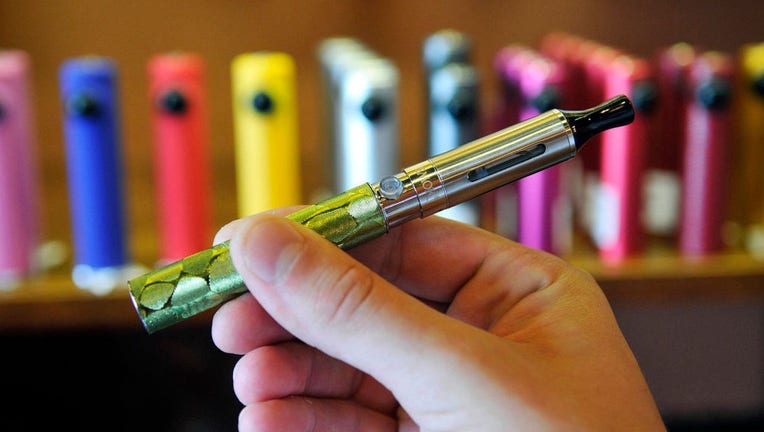US teens are drinking, smoking less but vaping, using marijuana more, study finds

FILE - Vaping appears to have replaced cigarettes as the primary nicotine delivery device for teens. (Diedra Laird/Charlotte Observer/Tribune News Service via Getty Images)
Fewer U.S. teenagers are drinking and smoking cigarettes in recent years, according to a newly-published study — but they’re also smoking marijuana and vaping more overall.
Researchers at Columbia University tracked teens’ use of substances for nearly 30 years and found that while substance use among U.S. adolescents has generally diminished over time, there were two exceptions: cannabis use and nicotine/cannabis vaping.
Cannabis use increased among all groups during the study period, but especially among teen workers, the researchers said. Nicotine vaping increased the most among the "highly social and engaged group that was less supervised," while cannabis vaping increased most among "social but disengaged teens," the study found.
The team at Columbia University’s Mailman School of Public Health noted that substance abuse was higher overall among kids with a lot of unsupervised free time. The study also found that time at a paid job was a significant factor in increasing the chances of trying an illicit substance among teens.
RELATED: San Francisco bans smoking, vaping tobacco in apartments but says weed is OK
Trends in substance use among US teens
Between 1991 and 2019, the team tracked data from more than 536,000 adolescents using the National Institute on Drug Abuse (NIDA)’s Monitoring the Future survey. Trends in the use of cigarettes, alcohol, cannabis, vaping of both nicotine and cannabis, and other substances were tracked for school-age students in grades 8 (13-14 years old), 10 (15-16 years old), and 12 (17–18 years old).
The team then cross-referenced this information against demographic factors such as level of social engagement, participation in structured activities, level of adult supervision, and employment. They further analyzed these patterns across other demographics like race, sex, and parental education.
"Social settings where adolescents interact with peers, at parties, for example, provide opportunities for substance use, especially in the absence of adult supervision," lead study author, Noah Kreski, MPH, in Columbia Mailman School’s department of epidemiology, said in a statement. "These social settings may produce peer pressure for adolescents to engage in substance use in order to fit in."
But Kreski and the co-authors noted how this may be particularly true among employed teenagers who regularly interact with older teens and adults. The authors suggested that employed adolescents often come from lower income brackets and are thus propelled into an early "pseudo-adulthood," leading them to adopt the habits more typical of older people.
The team also suggested that cannabis users, specifically, appear to seek out other cannabis users. Vaping was similarly correlated to social influence, the study said.
While marijuana use has risen overall since the 1990s, research has found a rapid rise in teen vaping in recent years. From 2017 to 2019, the percentage of teens who said they vaped nicotine in the past 12 months roughly doubled for eighth graders from 7.5% to 16.5%, for 10th graders from 15.8% to 30.7%, and for 12th graders from 18.8% to 35.3%.
In 2020, the rates held steady at a respective 16.6%, 30.7%, and 34.5%, according to the National Institutes of Health, citing the same Monitoring the Future survey.
Kreski said the vaping trend was especially striking.
"It soared in just three years," Kreski told HealthDay News.
RELATED: Juul to pay nearly $440 million in states' teen vaping settlement
The results of the study also found that 15% of teen respondents reported binge drinking in the past two weeks, and 27% had drunk alcohol in the past month.
Meanwhile, 15% of adolescents had smoked cigarettes in the past month, 13% reported any past-month cannabis use, 9% reported any use of other substances over the past month, and 12% reported nicotine vaping.
Another 6% reported cannabis vaping from 2017 onward, according to the study.
"Uncovering links between complex patterns of time use and substance use outcomes could reveal new opportunities for intervention and education of adolescents surrounding substances, helping to promote declines in use," the study authors wrote.
The results were published on Sept. 20 in the journal Substance Use and Misuse. It was funded by the National Institute on Drug Abuse.
RELATED: Marijuana laws by state in 2022
This story was reported from Cincinnati.

